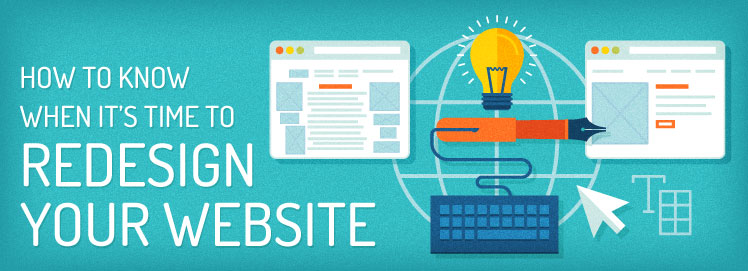
For most businesses and organizations, the thought of a website redesign can be both exciting and daunting. It often takes a lot of time and money. It also brings out a lot of stress and tension.
A website redesign wouldn’t be so complicated and stressful for everyone – the client, the designers and developers, the decision-makers and other invested team members – if you start off with a little bit of preparation and planning.
You’re probably asking “Why should I even go through a website redesign?”
There are a few tell-tale signs that indicate it’s time to redesign and redevelop your website, and even more good reasons to do it.
Signs your website needs a redesign:
- There’s a Flash intro on your home page.
- It has looked the same for more than 4 years.
- It hasn’t changed since your first launched it in 2005.
- It takes a long time to load each page.
- It doesn’t look good or even work on your phone and tablet.
- You don’t know how to edit your pages without emailing a hard-to-reach webmaster.
Reasons to redesign your website:
- Improve the experience for your visitors – “User experience” is everything that gives visitors ease, emotion, and effectiveness on a website. A terrible user experience on a website can ruin a business. On the other hand, an amazing user experience can increase traffic and reputation for your company.
- Increase revenue – The more people stay on your website, the more likely they will purchase your product/services. A redesign evaluates what works and what doesn’t, and focuses on the strongest revenue drivers.
- Snappier speed – Clearing the redundant and outdated clutter from your old website and optimizing it with modern, efficient systems will produce faster web pages.
- Improve performance – Upgrading to a modern content management system, streamlining your front-end code, and investing in a solid hosting environment will decrease page load times and increase overall stability.
- Targeted, customizable messaging – Increase conversions by creating focused landing pages to engage the full range of your customer profiles.
- Deeper data tracking – Discover actionable insights about how customers behave on your site through analytics integrations.
If any of the above benefits are something your website could use, it may be time for a redesign.
A website redesign involves four basic stages
- Discovery – we go deep into discussion about your business needs and how that translates to your online presence.
- Design – new and improved design elements are created to help with conversion strategies and user experience.
- Develop – functionality and systems are developed to make the website easier to manage, faster to use, and more effective for your business.
- Deploy – after iterations and testing are complete, the new website is launched and monitored for success indicators.
[blockquote width=”]
If you’ve been thinking about redesigning your company or organization’s website, kick-start the process with a Website Booster Session or fill in the Website Worksheet.
[/blockquote]
